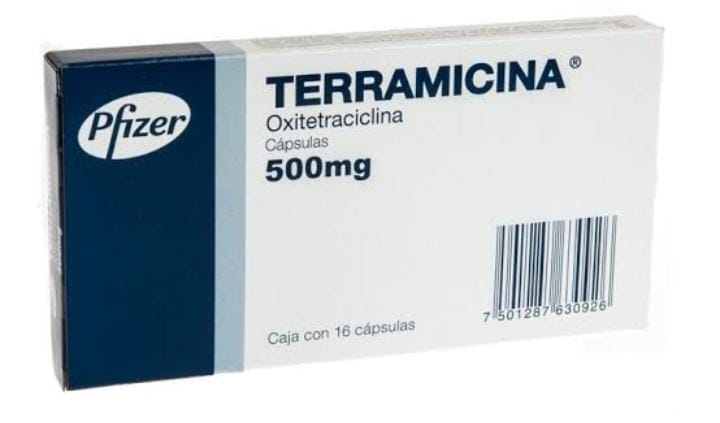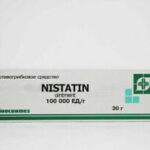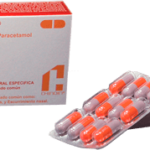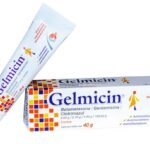Terramicina: Side Effects, Dosage, Uses, and Review

Terramicina is a Mexican brand of Oxytetracycline, a broad-spectrum antibiotic, active against a wide variety of bacteria. However, some strains of bacteria have developed resistance to this antibiotic, which has reduced its effectiveness for treating some types of infections.
Terramicina is active against a wide variety of Gram-positive and Gram-negative organisms. Infections caused by Terramicina-sensitive organisms include:
1) Respiratory tract infections: Pneumonia, whooping cough and other lower respiratory tract infections due to susceptible strains of Streptococcus pneumoniae, Haemophilus influenzae, Klebsiella pneumoniae and other organisms. Mycoplasma pneumoniae pneumonia. Treatment of chronic bronchitis (including the prophylaxis of acute exacerbations).
2) Urinary tract infections: caused by susceptible strains of the Klebsiella species. Enterobacter species, Escherichia coli, Streptococcus faecalis and other organisms.
3) Sexually transmitted diseases: Infections due to Chlamydia trachomatis including uncomplicated urethral, endocervical or rectal infections. Non-gonococcal urethritis caused by Ureaplasma urealyticum. Oxytetracycline is also indicated in chancroid, granuloma inguinale and lymphogranuloma venereum. Oxytetracycline is an alternative drug in the treatment of gonorrhoea and syphilis.
4) Skin Infections: Acne vulgaris when antibiotic therapy is considered necessary and severe rosacea.
5) Ophthalmic infections: Trachoma, although the infectious agent, as judged by immunofluorescence, is not always eliminated. Inclusion conjunctivitis may be treated with oral oxytetracycline alone or in combination with topical agents.
6) Rickettsial infections: Rocky Mountain spotted fever, typhus group, Q fever and Coxiella endocarditis and tick fevers.
7) Other infections: Stagnant loop syndrome. Psittacosis, brucellosis (in combination with streptomycin), cholera, bubonic plague, louse and tick-borne relapsing fever, tularaemia, glanders, melioidosis and acute intestinal amoebiasis (as an adjunct to amoebicides).
Terramicina is an alternative drug in the treatment of leptospirosis, gas-gangrene and tetanus.
Presentations of Terramicina
This medicine has different presentations and is subject to the treatment of infections in different regions.
Terramicina Capsules: Taken orally and can alleviate most of the aforementioned infections . (content 500 mg)
Terramicina Pills: Taken by mouth and can alleviate most of the infections mentioned above. (content 125 mg)
Terramicina ointment: Very useful in cases of superficial purulent infections, pustular dermatitis and infections associated with burns and wounds. (content 28.4g and 3g of oxytetracycline)
Terramicina ophthalmic ointment: used for eye infections that affect the conjunctiva and / or the cornea. (content 110g and 0.05g of oxytetracycline)
Terramicina Injections: It is used to treat severe cases of the aforementioned diseases. (content 3 vials of 100 mg)
How to administer Terramicina
Terramicina capsules and tablets
For mild infections, the adult dose is 250 mg every 6 hours or 500 mg every 12 hours. Children older than 8 years should take 25 to 50 mg per kilogram per day, divided into 4 doses.
For severe infections, take 500 mg every 6 hours.
Brucellosis – Take 500 mg every 6 hours for 3 weeks. Add IM Streptomycin: 1 g every 12 hours in the first week, 1 g every 24 hours in the second week.
Urinary tract infection: take 500 mg every 6 hours for at least 7 days.
Primary, secondary, tertiary or latent syphilis: 500 mg every 6 hours. Syphilis lasts less than a year for 15 days and syphilis lasts more than 1 year for 3 days.
Acne vulgaris and rosacea: Take 250 to 500 mg a day for as long as the doctor indicates.
Terramicina ointment
An ointment of approximately 1 cm should be used. It should be applied 4 to 6 times a day in the conjunctival sac of the lower eyelid until the infection subsides and healing is complete.
If blepharitis occurs, the scales and knots should be removed before the drug is administered.
Terramicina Injections
If the patient cannot take it orally (due to dysphagia, nausea, gastrointestinal intolerance, confusion, lack of cooperation, trauma, or surgical wounds due to gastrointestinal or intestinal obstruction), the following doses should be administered:
In adults, it will be 200 to 300 mg per day at a dose of 100 mg every 8 to 12 hours, or a single dose of 250 mg. For severe infections, 300 to 500 mg are injected daily in the same way.
For children older than 8 years, the dose is 15-25 mg / kg / day, with a maximum of 250 mg per use.
Can Terramicina cause problems?
Along with their useful effects, most medicines can cause unwanted side-effects, although not everyone experiences them. The table below contains some of the ones associated with Terramicina. The best place to find a full list of the side-effects which can be associated with your medicine, is from the manufacturer’s printed information leaflet supplied with the medicine. Alternatively, you can find an example of a manufacturer’s information leaflet in the reference section below. Speak with your doctor or pharmacist if any of the following continue or become troublesome.
| Terramicina side-effects | What can I do if I experience this? |
| Feeling sick (nausea), tummy (abdominal) pain | Stick to simple foods – avoid fatty or spicy meals |
| Diarrhoea | Drink plenty of water to replace lost fluids. If this continues or is severe, speak with a doctor |
| Headache | Drink plenty of water and ask your pharmacist to recommend a suitable painkiller. If the headaches continue, speak with your doctor |
Important: Terramicina can occasionally cause allergic reactions, such as a skin rash. Speak with a doctor as soon as possible if this happens to you.
Terramicina price
Its price is between 150 and 300 Mexican pesos; depending on the presentation of your choice.





